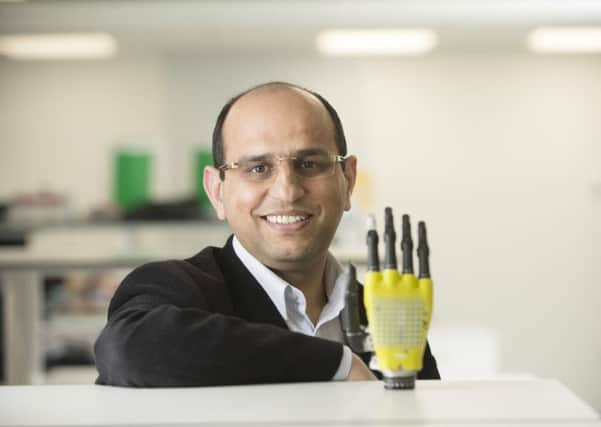Scots researchers make wonder material breakthrough
This article contains affiliate links. We may earn a small commission on items purchased through this article, but that does not affect our editorial judgement.


Graphene was first isolated from graphite in 2004 being just a single atom thick but it is flexible, stronger than steel, and capable of efficiently conducting heat and electricity.
However, widespread industrial adoption of graphene has so far been limited by the expense of producing it, which could be reduced by almost 100 per cent of its current cost.
Advertisement
Hide AdAdvertisement
Hide AdAffordable graphene production could lead to a wide range of new technologies reaching the market, including synthetic skin capable of providing sensory feedback to people with limb prostheses.
Researchers at the University of Glasgow have found a way to produce large sheets of graphene, using the same cheap type of copper used to manufacture lithium-ion batteries found in many household devices.
Graphene is often produced by a process known as chemical vapour deposition, or CVD, which turns gaseous reactants into a film of graphene on a special surface known as a substrate.
The research team used a similar process to create high-quality graphene across the surface of commercially-available copper foils of the type often used as the negative electrodes in lithium-ion batteries. The ultra-smooth surface of the copper provided an excellent bed for the graphene to form upon.
They found that the graphene they produced offered a stark improvement in the electrical and optical performance of transistors which they made compared to similar materials produced from the older process.
Dr Dahiya, of the University of Glasgow’s School of Engineering, said: ““The commercially-available copper we used in our process retails for around one dollar per square metre, compared to around $115 for a similar amount of the copper currently used in graphene production. This more expensive form of copper often required preparation before it can be used, adding further to the cost of the process.
“Our process produces high-quality graphene at low cost, taking us one step closer to creating affordable new electronic devices with a wide range of applications, from the smart cities of the future to mobile health care.
“Much of my own research is in the field of synthetic skin. Graphene could help provide an ultra-flexible, conductive surface which could provide people with prosthetics capable of providing sensation in a way that is impossible for even the most advanced prosthetics today.
Advertisement
Hide AdAdvertisement
Hide Ad“It’s a very exciting discovery and we’re keen to continue our research.”
The research was conducted by the University of Glasgow in partnership with colleagues at Bilkent University in Turkey. A report is published in the Scientific Reports.